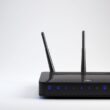When it comes to finding the answer to “how to get weather alerts on iPhone and Android,” you are not alone. And that’s because it can be useful to get automatic weather alerts on your phone, like the ones provided by the Google app. But sometimes, you may want to set up alerts for when the outdoor temperature reaches a certain point or when certain weather conditions, like rain or storms, are present outside.
It’s also easier to avoid the effort of checking the weather app on your phone by setting automated notifications at the temperature levels you choose.
What types of weather alerts can you get on your smartphone?
The kind of weather alerts you get will differ based on the app you’re using and where you live. The majority of the time, though, you’ll receive some regular notifications. There are many warnings on the way, ranging from heavy rain and thunderstorms to tornado warnings and thick fog. This is a general rule of thumb: any situation that hurts one’s visibility, livelihood, or social life is likely to be flagged as a significant warning.
How to Get Weather Alerts on Android?
- Step 1: Look for the Custom Weather Alerts app on the Google Play Store.
- Step 2: When you open the app for the first time, it will give you a quick introduction to the app’s features. Continue to press the Next button until all of the tips have been read.
- Step 3: There will be three tabs in the app: one for weather, one for alarms, and one for settings. Under the Settings menu, you can choose the area where you want the app to check the weather for you. Additionally, you have the option of utilizing GPS to pinpoint the exact location. You may also choose the display units that you want to use.
- Step 4: Create an alarm by choosing the Alarms tab and clicking the floating icon. After pressing the button, an alarm icon with a plus sign will be displayed.
- Step 5: A pop-up menu will appear on the screen. You have the option of receiving an alert based on a certain temperature or a variety of weather conditions, such as rain, storms, snow, or cloudiness.
- Step 6: After selecting an item, such as the temperature, a pop-up window will appear, prompting you to configure your alarm further. With the slider, you can choose a precise temperature for your alarm to sound at. You may select to be informed whenever the temperature falls below a certain level or rises over a certain threshold that you choose. You will also be able to choose the date and time of the event.
- Step 7: Type in a description for the alert and hit the “Add Alarm” button to complete the process.
How to Get Weather Alerts on Your iPhone?
- Step 1: Find the Custom Weather Alerts app on the App Store by searching for it in the search field.
- Step 2: Download and open the Custom Weather Alerts application, after which you must register for an account. You may be required to sign up for a free trial or subscription to progress.
- Step 3: To set the alarm, go to the bottom bar and choose “Alarms.” Create an alarm by tapping the Plus icon in the top-right corner of the screen. Give the alarm a name and specify the conditions under which you would want to receive an alert.
Also, you may schedule the app to monitor conditions at a certain time each day. You may save your changes by clicking the “Save” button in the top-right corner when you’re done customizing everything. To get tailored weather updates via email, you may also make use of the IFTTT (If This Then That) automation service.
Getting alerts on SEVERE weather conditions
How to turn on (and off) emergency alerts on your Android phone?
- In settings, choose connections, and then further connection settings, followed by wireless emergency alerts.
- Then, in the top right-hand corner, choose Settings from the three-dot menu that has appeared.
- You may customize your emergency notifications by selecting the sorts of alerts you wish to receive.
- The procedures may vary somewhat depending on the model of Android you have. You can always look for “Emergency Alerts” by typing it into the search bar at the top of the screen in the Settings app. Select the kind of notifications you wish to receive, such as AMBER Alerts, public safety notifications, or severe weather notifications.
- An alarm will ring and a message will appear on your device’s screen if you get an emergency alert. The same steps apply if you ever want to turn off any emergency notifications; just choose the alerts that you no longer want to receive and follow the instructions.
How to turn on (and off) emergency alerts on an iPhone?
- Go to Settings > Notifications > Emergency Alerts and turn on the feature.
- Government alerts (AMBER Alerts, Emergency Alerts, and Public Safety Alerts) are enabled by default. An alert from the government will cause your smartphone to vibrate, an alarm sound to be heard, and a message to appear on your device’s screen. Do Not Disturb mode does not prevent government alerts from being received.
- You may turn off any government alerts at any time by following the same procedure as above and selecting the option to turn off the alerts you no longer wish to receive.
Wrapping Up
Experts advise that you activate those emergency government alerts on your phone, regardless of whether you are using an Android or an iPhone. By going into the settings menu and checking the boxes for notifications and emergency alerts, you will be able to ensure that they are enabled.
So, if you were looking for guidelines on how to get weather alerts on iPhone and Android, our guide has already covered everything for you.



